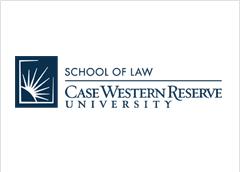Abstract
This conception of thick or thin protection is part of routine trademark disputes, but it has more interesting implications for trademark law. Trademarks do more than identify a product’s source. They embody connotative and abstract meanings over which trademark owners seek control. Traditional trademark doctrine is often ill-suited to resolve the resulting litigation. One way courts respond is by calibrating thickness of protection. Judges receptive to the expansion of trademark rights may grant thick protection; skeptical judges, thin. This shortcut frustrates the development of precedent. Treating a mark as thin, for example, enables courts to resist broad trademark claims without disturbing their doctrinal underpinnings. This softens the impact of trademark’s growing scope in individual cases, but without providing comfort to future defendants.
Unfortunately, judicial fluctuation between thick and thin protection is inevitable and intertwined with the long, unresolved debate about the extent to which trademarks should be treated as a form of property. Drawing on the literature describing modularity and property rights, this Article argues that thick trademark protection is simultaneously appealing to judges yet impossible over the long run. Thick protection offers the ability to hide complex interactions between trademark meanings behind a simpler property signal, leaving it to the trademark owner to manage them. This approach may be understood as an information-economizing tool that frees a judge from the task of determining whether an unauthorized use of a mark’s extended meaning adversely affects its core, source-identifying function. But many such uses implicate the interests of third parties who cannot rely on the economic decisions of the mark owner for vindication. Because trademark doctrine also recognizes the importance of these concerns, consistent treatment of trademarks as thick is impossible notwithstanding the lure of the property shortcut. Judicial uncertainty and unclear doctrine is the result.
Courts should think more clearly and explicitly about when thick protection is appropriate. Many extended trademark meanings are built out of a mark’s source-identification function. This suggests that the case for thick protection is strongest when a mark’s source identification capability is threatened, but weaker with respect to other meanings. Some doctrinal developments in trademark law reflect this view; others do not. But regardless of whether one agrees with this approach to trademark thickness, judicial choices on the subject should be acknowledged and made transparent.
Recommended Citation
Michael Grynberg,
Thick Marks, Thin Marks, 67 Case W. Rsrv. L. Rev. 13 (2016)
Available at:
https://scholarlycommons.law.case.edu/caselrev/vol67/iss1/7
